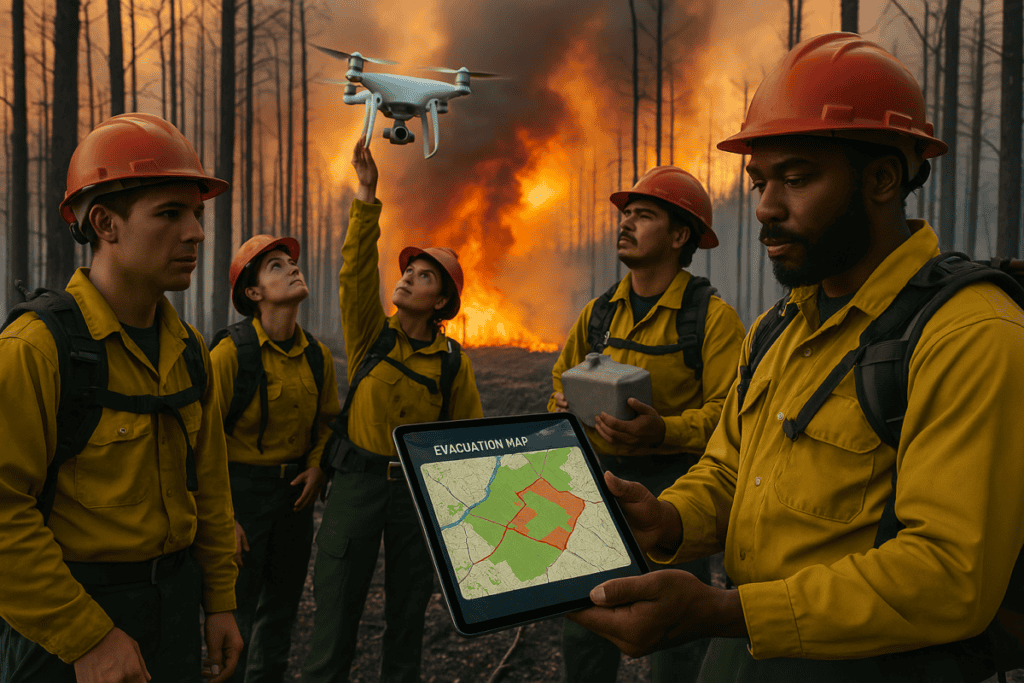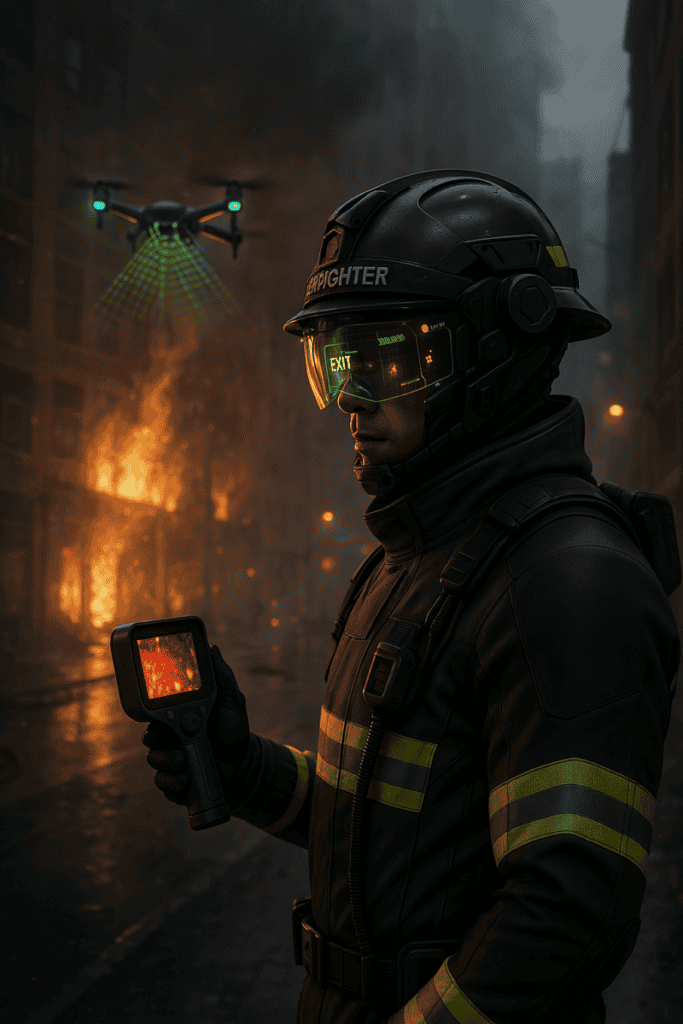
An Essential Guide for Aspiring Firefighters
Firefighting has long been synonymous with bravery and selflessness, but the profession is undergoing profound changes in 2025. Aspiring firefighters today confront a landscape shaped by escalating health risks, climate-driven disasters, and technological innovations.
Cancer linked to toxic chemicals in gear, year-round wildfires, and staffing shortages dominate headlines, yet the fire service remains a beacon of purpose for those willing to adapt. This guide delves into the realities of becoming a firefighter in this transformative era, offering actionable advice to navigate risks, seize opportunities, and build a resilient career.
Whether you’re drawn to urban rescue operations or wildfire mitigation, understanding these evolving demands is critical to success.
During my 30 years in the fire service, I have seen a lot of change. The biggest areas of change are in safety and health. The top topics that come to mind are better breathing apparatus, hearing protection, better protective turnout gear, and now a focus on cancer prevention.
In this article we will dive into the top concerns and priorities for becoming a firefighter in 2025.
Is Firefighting Still Worth It in 2025?
The question of whether firefighting remains a viable career hinges on balancing its inherent risks against its rewards. Firefighters face a 9% higher cancer risk than the general population, according to the National Institute for Occupational Safety and Health (NIOSH), with prolonged exposure to PFAS chemicals in turnout gear and carcinogenic smoke identified as primary culprits.
Stories like that of Lt. Brian Kyono, a 20-year veteran of the San Francisco Fire Department who battled Stage 3 lymphoma, underscore the dangers. Lt. Kyono now advocates for rigorous decontamination practices, emphasizing that “cleaning gear isn’t optional—it’s a matter of life and death.”
If you want to read more about Lieutenant Kyono’s battle with cancer and his determination to change the way we deal with the cancer risks in firefighting check out the article on firefighter close calls:
LATE FIREFIGHTER SET UP PROJECT TO BATTLE FIREFIGHTER CANCER
Yet, surveys reveal enduring passion within the ranks. FireRescue1’s 2025 What Firefighters Want report found that 83% of firefighters still derive deep fulfillment from their work, citing camaraderie and the chance to save lives as irreplaceable rewards. The profession also offers stability, with the Bureau of Labor Statistics projecting 25,700 annual job openings through 2033. However, challenges persist; entry-level salaries average 40,000–40,000–50,000 in many regions, lagging behind police and EMS roles, while PTSD rates among firefighters are 20% higher than the national average. For those undeterred by these hurdles, firefighting remains a calling—one that demands vigilance, resilience, and a commitment to lifelong learning.
Your 2025 Firefighter Career Roadmap
Breaking into the fire service requires strategic planning. The journey typically begins with EMT certification, a non-negotiable requirement for 90% of departments. Accelerated programs, such as UCLA’s 6-week EMT boot camp (1,200–1,200–2,500), fast-track eligibility, while paramedic training (1–2 years) enhances competitiveness for urban departments.
Next, the fire academy immerses recruits in hands-on training: live burns, ladder drills, and hazmat simulations. Programs aligned with NFPA 1970 standards ensure proficiency in using modern PPE, while Incident Command System (ICS) training prepares recruits to manage complex, multi-agency emergencies. Costs range from 3,000–3,000–8,000, though scholarships from organizations like the National Volunteer Fire Council (NVFC) can offset expenses.
Check out my post; 2025, your Year for Becoming a Firefighter.
Post-academy specialization opens doors to advanced roles. Hazmat technicians complete 40-hour HAZWOPER certifications and annual drills, while technical rescue teams master swift water and high-angle rope operations. Wildland firefighting, a field growing in urgency due to climate change, requires a NWCG “Red Card”—earned through courses like S-130/S-190 and a grueling 3-mile hike with 45 pounds in under 45 minutes. Higher education also plays a pivotal role: an associate’s degree in Fire Science covers fire dynamics and arson investigation, while a bachelor’s degree in Public Administration paves the way to leadership roles like battalion chief.
How to Stay Safe as a Firefighter in 2025

Surviving a firefighting career in 2025 demands proactive health management. Cancer prevention starts with gear innovation: brands like Globe and Honeywell now produce PFAS-free turnout jackets and pants, reducing exposure to “forever chemicals.” On-scene protocols matter equally—using Defense Wipes immediately after fires cuts soot absorption by 85%, while showering within one hour with soap like Dawn dish detergent breaks down toxic oils.
Departments are increasingly adopting “clean cab” policies, isolating contaminated gear in exterior compartments to protect crews during transit. Mental health, often overlooked, is equally critical. The Share the Load™ program, offered by the NVFC, provides free counseling for PTSD and anxiety, while apps like Firefighter Mental Health deliver guided meditations tailored to shift recovery.
Physical fitness remains non-negotiable: functional workouts mimicking job demands—such as sandbag carries (75 pounds for 100 ft) and weighted stair climbs—build the endurance needed for high-rise fires. Annual VO2 max tests (targeting ≥42 mL/kg/min) and DEXA bone density scans help firefighters monitor long-term health, reducing risks of cardiac events or stress fractures.
Firefighter Performance Blueprint
Wildfire Careers: What You Need to Know

Wildfire fighting has evolved into a year-round profession, with 7.1 million acres burned annually in the U.S.—a 30% increase since 2020. Climate shifts have turned states like California and Oregon into perennial hotspots, where 60 million homes in wildland-urban interface zones face unprecedented risks.
Federal agencies like the U.S. Forest Service and Cal Fire are hiring aggressively, though roles vary widely. Federal positions, often listed on USAJOBS.gov, start at 15–15–20/hour but include housing stipends for remote postings. State roles, such as Cal Fire’s “Firefighter I,” offer salaries up to $70,000 with pension benefits, while temporary “AD crews” provide entry points for gaining experience.
Modern wildfire combat relies on cutting-edge tools. Genasys’ Zonehaven software maps real-time evacuation zones across 12 states, while drones like the DJI Matrice 300 deploy fire-retardant pods in inaccessible terrain. Training emphasizes structure triage—identifying defensible homes—and mastering the “fire shelter,” a last-resort protective device. For those pursuing this path, cross-training in structural firefighting enhances versatility, ensuring readiness for both wildfire and urban emergencies.
Preparing for the Future of Firefighting

Preparing for the Future of Firefighting
Aspiring firefighters must assess their readiness holistically. Begin by auditing your EMT skills: Can you perform a pediatric airway assessment or manage a multi-casualty trauma scene?
Next, research PFAS-free gear options and decontamination protocols, budgeting 3,000–3,000–4,500 for a new turnout set. Mental resilience is equally vital—establish a support network, whether through peer groups or therapy, to navigate traumatic calls.
Finally, stay informed: Follow organizations like the International Association of Fire Fighters (IAFF) for updates on safety standards and legislative advocacy.
Conclusion
Firefighting in 2025 is not for the timid, but for those equipped with knowledge and grit, it remains one of society’s most vital professions.
By embracing advancements in gear technology, prioritizing mental and physical wellness, and specializing in high-demand areas like wildfire response, firefighters can mitigate risks and thrive.
Resources like FireRescue1’s cancer prevention guides and IAFF’s training webinars offer invaluable support, while a shift toward plant-based diets (linked to reduced cancer rates in recent studies) underscores the importance of holistic health.
The fire service’s future hinges on adaptable, passionate individuals ready to meet these challenges head-on. Are you prepared to join their ranks?
- Subscribe to FirefighterConnection.com newsletter for in-depth articles on wildfire tactics, gear reviews, and interviews with industry leaders.
- Download our free 2025 Firefighter CPAT Readiness Checklist, featuring how to ace your firefighter physical ability test. Including firefighter fitness plans.
- Follow us on Instagram (@FirefighterConnection), twitter and Facebook for daily tips, live Q&As, and community stories.
- Check out our new website, The Stoic Firefighter. The stoic Firefighter focuses ob becoming a mentally strong firefighter.
Together, we can forge a safer, stronger future for firefighters everywhere. 🔥🚒
